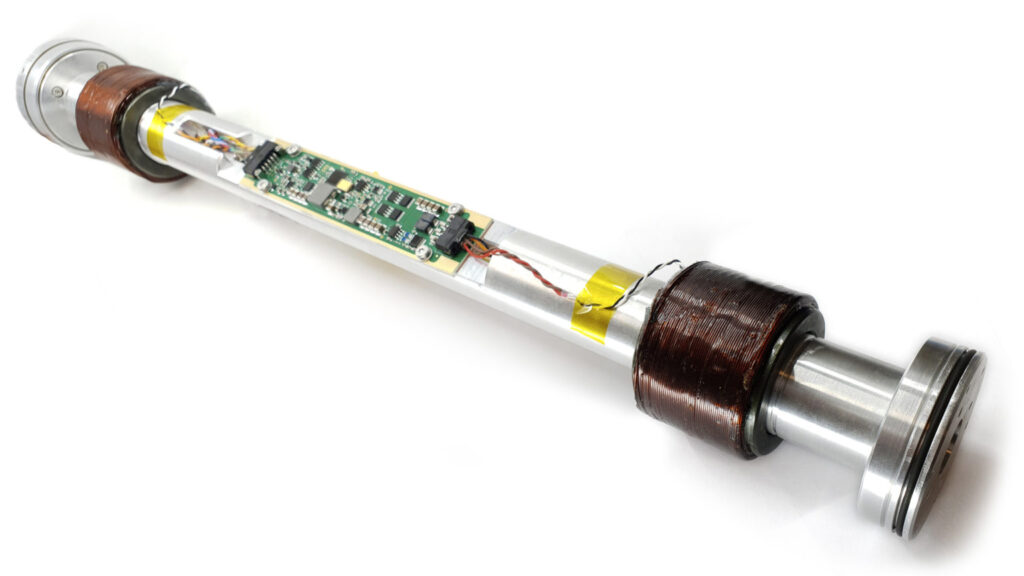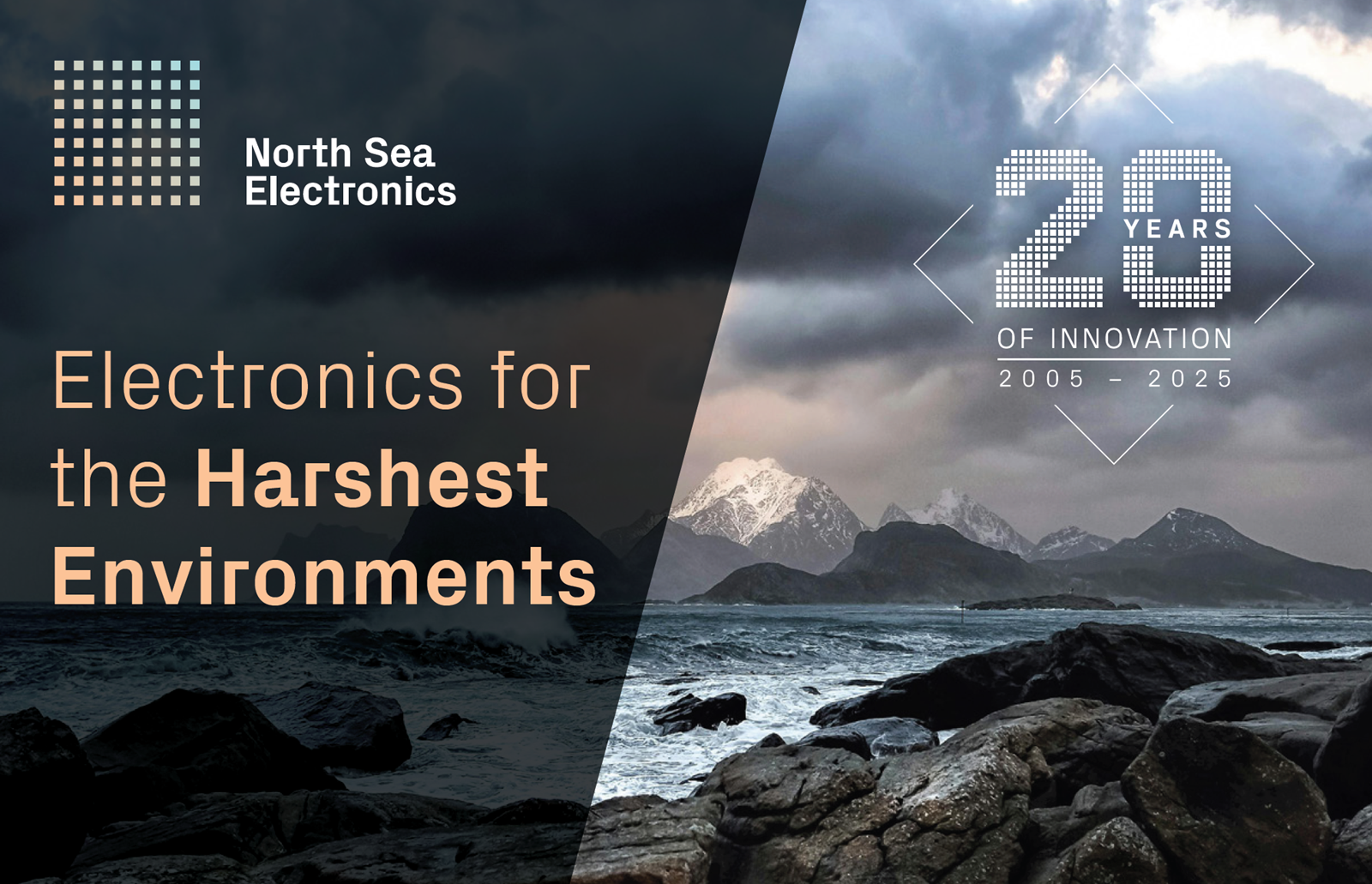Global Dynamics Inc., based in Canada, is a downhole technology company with an emphasis on real-time downhole data to improve overall production. GDI is a 20-person team filled with engineers and subject matter experts, a good portion of whom came over from a major service provider and their quality research and engineering team.
Over the past 5 years or so, in partnership with NSE, Dean and GDI, have been able to provide unprecedented communication and measurement downhole. And with this capability, his clients are seeing and understanding conditions they never understood before. In Dean’s words, GDI and NSE are literally rewriting their operational playbooks.
Back in 2010 one of the first products we built was a downhole camera, and that took us, in fact, to North Sea Electronics. And I must say, we are just so impressed with every single thing they do.
They want to know how things are going, how things are working. Richard (co-founder and CTO) just wants to hear, not advertise. We think it’s a great fit. Dean says, I cannot say enough about the quality of the product line and how much of a difference it makes in the work that we do.
After corona Dearn has been focused primarily on Saudi Arabia, the US (Louisiana) and Algeria.
Whenever we start in a region, the first thing the customer does is pick the absolute worst case and give it to us.
Dean is usually working with the completion sides and intervention. And the wells are over 6000 meters in depth with pressures up to 12,000 PSI and temps up to 165 degrees Celsius. So much vibration. It wrecks the pipe and surface gear. We are far out and the frictions are intense.
The NSE product? You would never know it had been in the hole.
With NSE we can concentrate on the rest of the tool. And in fact, we have a number of other tools in the product development queue based on knowing we can rely on NSE.Dean’s clients use an “extended reach tool.” Basically, what it does is it interrupts the flow and creates a “water-hammer” effect. That helps to reduce the friction.
Here’s what GDI does (powered by NSE):
We put wire inside coil tubing. We pump it in. A 4mm OD metal tube, with a 17-gauge wire in it. This is where the magic comes in, I think. We have over 6000 meters of a 17-gauge conductor (think smaller than your housing wire).
And we can communicate downhole at 200kbit/s – all because of what NSE produces. And their power supplies. And their surface modems.
And then Dean and his team built their own master interface unit.
And when we turn all this on, voila, we get communication. We´re sending 300 volts down, we get our data back, we are updating 10x per second.
Dean uses a termination sub for the wire – a cable head – that converts it back to a connection so they can get electrical communication through. Then we just thread these tools on. We have strain gauges we use for torque and tension and compression. We also have pressure and vibration gauges.
CCL – A Game Changer

Dean really gets animated when discussing NSE’s Casing Collar Locator tool (CCL).
We also have the casing collar locator that NSE produced. We worked with them on it in fact. We gave them enough information on it to begin with but then (laughing) they just ran with it. And I tell you, there is no other tool like it on the market today. It works amazingly well.
The major oil field service providers have something similar, but it is stuck in the wireline world – the NSE CCL is a new concept. There were no CCLs out there you could pump flow through the sensor.
”There have been other attempts by different companies, but they just never got past that communication part – and that is the most important part. I still find it amazing we can get communication over these lengths and under these quite unfriendly conditions.“
CCL for Saudi Arabia:
We find the collars. Then we find anomalies and openings in the casing.
The coiled tubing itself, Dean explains, is very elastic – a metal that will expand under pressure and temperature thus you never really know what your actual depth is. Depth is recorded at surface. So, you know what you put in the well, but coil tubing can end up being 20+ meters longer than you actually think. With CCL, we know exactly where we’re at in the well at all times but also can find the anomalies.
We´re dealing with multi-lateral wells. We can actually find the openings. Multi-lateral wells are wells with multiple laterals drilled in one mother bore. What has happened is that the operators had decided to drill each lateral to the same depth so they never know which one they´re in.
Long story short – Dean and GDI can actually find the openings without extremely costly trial and error methods being used previously. And GDI can get them into those holes.
Dean smiles – That has been a huge huge benefit for the customer.
You have to know your depth and find it.
GDI has in fact developed a depth-based data logger software service around NSE’s CCL.
I know of nothing else like it on the market.
NSE uses inductors instead of magnets. So the CCL allows Dean and his clients to see perforations as well – or even if you are trying to find a spot in the well and isolate it.
“Now We Can Do Things Differently, Better”
Because before all decisions and measures taken were surface based. This is key.
The guys in the US are just super happy with their new capabilities and have started to realize nothing was as they thought downhole and they can now rewrite their playbooks, for the better.
So Dean has described how he is able to provide that downhole communication link and measurements along various other data points like pressure, torque, temperatures, tension and compression – but once he introduces his capabilities to the coiled tubing companies and the operators, he has found the clients start to generate ideas of their own based on their newfound “vision” of the actual conditions downhole.
Customers are flooding Dean with requests and feedback. All of our guys are from a major service provider. We take everything we have learned and feed it back to the team.
Dean talks about one “15 year hand from one of the major service providers,” a real top guy, who was out with him in Louisiana who said, after using GDI’s “smart link system”, he had to rethink his whole approach to the work he was doing, in essence. This is completely different than what I thought was happening down there.
Dean adds: It just changes everything that the customer does. Their mindset, everything.
One customer even said “Now we´re drilling blind if we do not have the GDI tool with NSE electronics.”
Geir Kaldestad, Founder and CEO of NSE concludes with the following:
At NSE, we believe that successful collaborations are built on a foundation of trust and communication. We are grateful for the opportunity to work with GDI, who trusted us initially by implementing our modems and power converters, but furthermore sharing their valuable insights and feedback, enabling us to develop the high-performing CCL. Here at NSE we remain committed to fostering strong relationships with our customers, and we thank GDI for sharing their experience with and about NSE, and their continued cooperation. Thanks!
For more information:
Global Dynamics Inc – https://gdi-tec.com/ sales@gdi-tec.com
North Sea Electronics – www.nse.no / sales@nse.no

